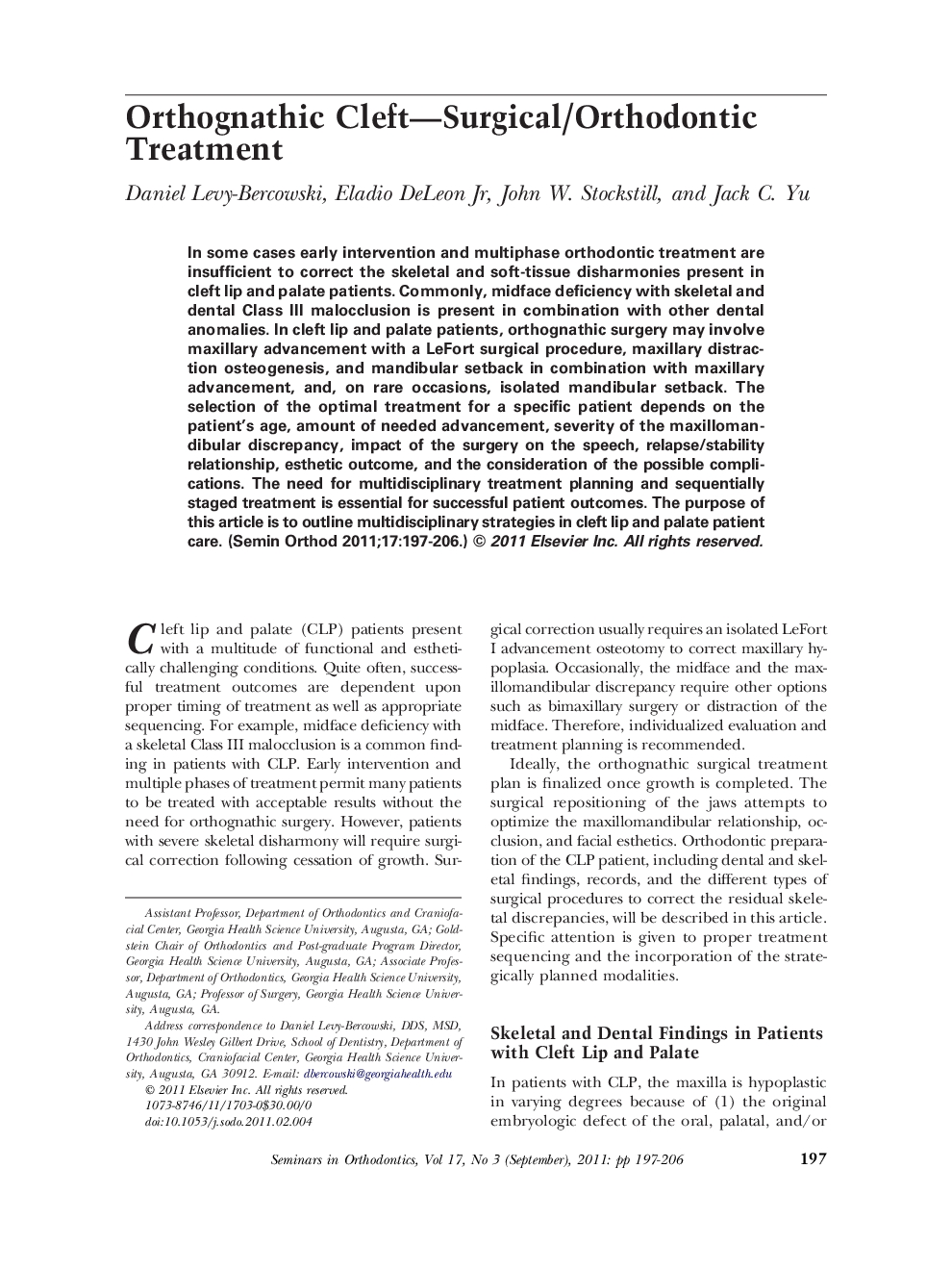| Article ID | Journal | Published Year | Pages | File Type |
|---|---|---|---|---|
| 3175595 | Seminars in Orthodontics | 2011 | 10 Pages |
In some cases early intervention and multiphase orthodontic treatment are insufficient to correct the skeletal and soft-tissue disharmonies present in cleft lip and palate patients. Commonly, midface deficiency with skeletal and dental Class III malocclusion is present in combination with other dental anomalies. In cleft lip and palate patients, orthognathic surgery may involve maxillary advancement with a LeFort surgical procedure, maxillary distraction osteogenesis, and mandibular setback in combination with maxillary advancement, and, on rare occasions, isolated mandibular setback. The selection of the optimal treatment for a specific patient depends on the patient's age, amount of needed advancement, severity of the maxillomandibular discrepancy, impact of the surgery on the speech, relapse/stability relationship, esthetic outcome, and the consideration of the possible complications. The need for multidisciplinary treatment planning and sequentially staged treatment is essential for successful patient outcomes. The purpose of this article is to outline multidisciplinary strategies in cleft lip and palate patient care.
